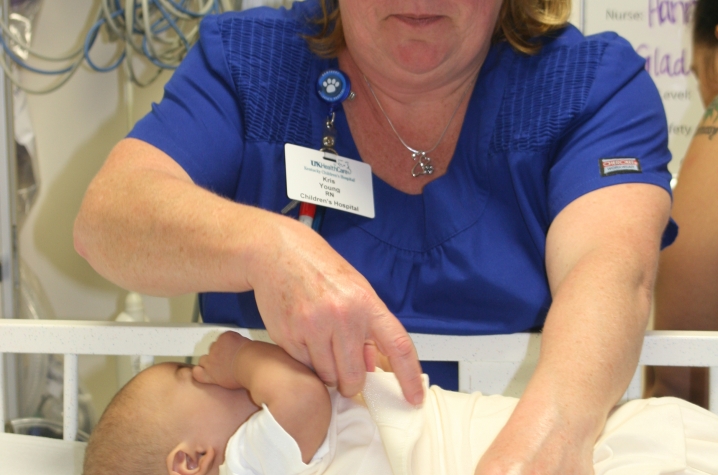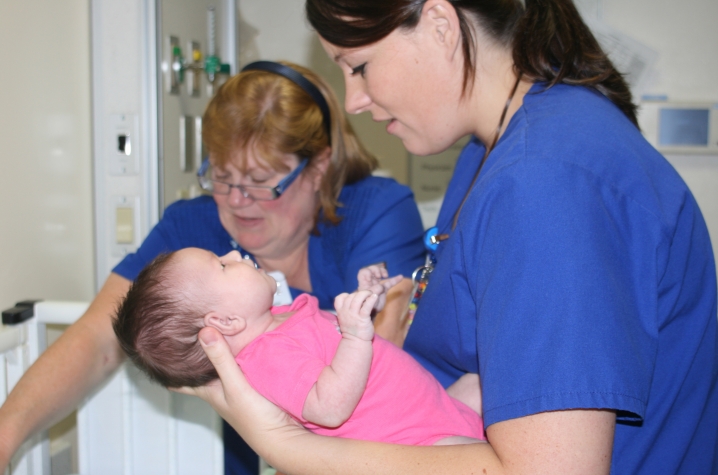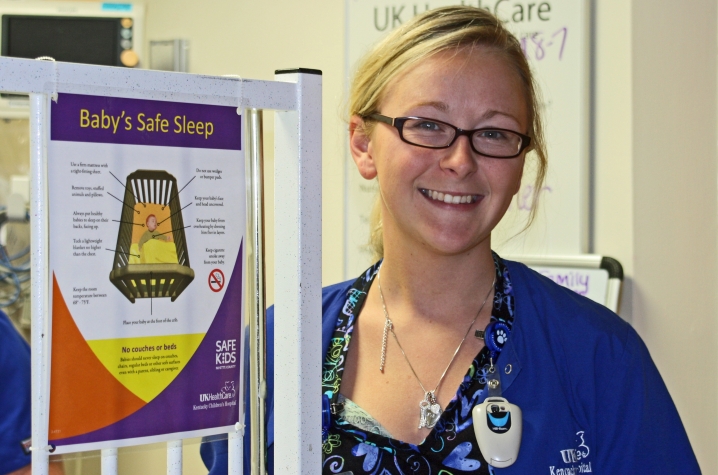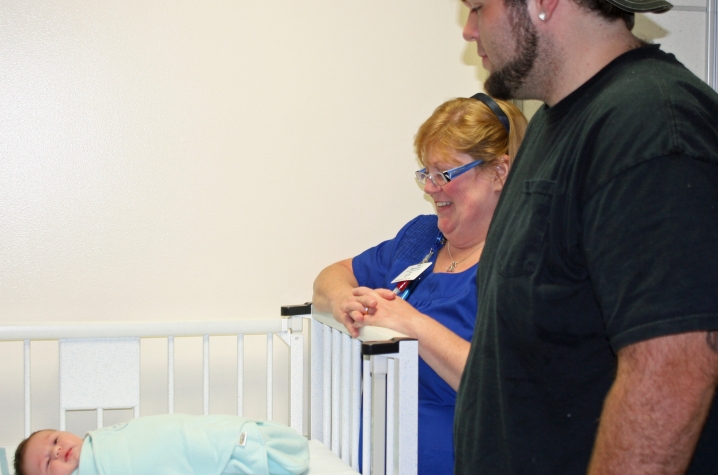Kentucky Children's Hospital Promotes Safe Sleeping Tips
LEXINGTON, Ky. (Oct. 29, 2013) -- It is one of the most devastating events that can happen to a family and in Kentucky it happens at a rate nearly double the rest of the U.S. Suffocation is the leading injury-related cause of death in infants in Kentucky but it can be prevented by utilizing safe sleeping practices.
At the Kentucky Children's Hospital, a new initiative is teaching and demonstrating risk-reduction strategies for Sudden Unexpected Infant Death (SUID) to parents of infants one year and younger before their discharge from the hospital.
Although Sudden Infant Death Syndrome (SIDS) is an unexplained death of an infant, the Centers for Disease Control and Prevention (CDC) now recommends a broader category referred to as Sudden Unexpected Infant Death (SUID) which includes infant deaths that after investigation are determined to be suffocation or causes from an unsafe sleeping environment.
"Too many infants are dying from an unsafe sleep environment making Safe Sleeping a prevention priority in Kentucky," said Amy Brassfield, pediatric clinical nurse specialist at Kentucky Children's Hospital. "Even though about half of infant deaths in the SUID category are attributed to classic SIDS -- meaning the sudden death cannot be explained -- the focus for Kentucky Children's Hospital is to teach and model a safe sleeping environment and reduce the number of infant deaths where suffocation is preventable."
In a study by the Kentucky Maternal and Child Health team, nearly 88 percent of infant deaths due to SIDS, accidental suffocations or where the cause could not be determined, there was documentation of sleep-related risk factors. "This means that in Kentucky, at least 8 out of 10 of these infant deaths might have been prevented if the infant was in a safe sleep environment -- meaning sleeping alone, on their back, in a crib, without soft pillows, blankets or toys, and on a firm mattress," according to the report.
Characteristics of a sleep environment that can attribute to infant deaths include soft pillows, mattresses or mattress coverings in the crib, bed sharing or co-sleeping, use of an adult bed and couch sleeping.
To further modeling of safe sleeping, the use of HALO® Sleep Sack Swaddles -- a wearable blanket that replaces the use of loose blankets in the crib that can cover your baby's face and interfere with breathing -- are being used in the neonatal intensive care unit, the newborn nursery and throughout Kentucky Children's Hospital for all infants under one year of age.
In addition, signage about safe sleep practices has been placed on every crib and bassinette throughout the hospital reinforcing the teaching of parents and caregivers by the nursing staff.
"It is important for us as health care providers to do what we can do to help prevent infant suffocation deaths in Kentucky," added Lisa McGee, clinical nurse specialist at the Kentucky Children's Hospital neonatal intensive care unit. "By teaching and demonstrating these measures that provide a safe sleeping environment we hope to bring more awareness to this issue and reduce the number of preventable deaths."
Safe Sleeping Tips
-
Always place your baby on his or her back to sleep for naps and at night.
-
Place your baby on a firm sleep surface, such as on a safety-approved crib mattress, covered by a fitted sheet.
-
Keep soft objects, toys, and loose bedding out of your baby’s sleep area.Swaddle infant snuggly, with blanket no higher than the chest at armpit level.
- Limit items in the baby’s sleep environment to prevent something from covering the baby’s face (nose and mouth).
- Be sure nothing is loose in the bed or hung over the sides/rails of the bed where the infant sleeps.It is safest to avoid the use of bumper pads.
- Do not allow smoking around your baby.
- Keep your baby’s sleep area close to, but separate from, where you and others sleep. No co-sleeping.
- Do not let your baby overheat during sleep by dressing baby in as few layers as possible to maintain thermoregulation.
Media Contact: Kristi Lopez, 859-806-0445, kristi.lopez@uky.edu








